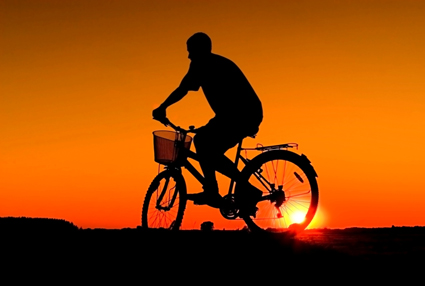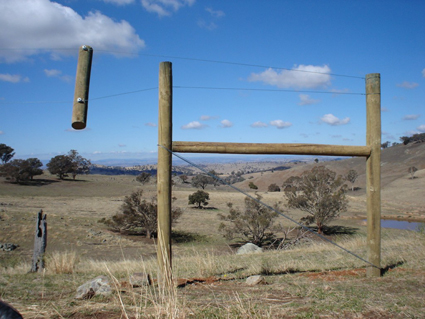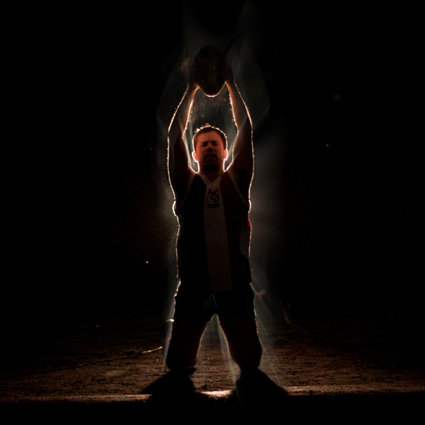regional as centre
keith gallasch: interview steve mayhew, kumuwuki/big wave

Coriolis Effect. “Goolwa has great bike tracks but very few bikes…we’re bringing the bikes to Goolwa for some freewheeling through art—and in our wake we’re leaving the bikes for others to use” (press release).
COUNTRY ARTS SA IS HOSTING THE 2012 NATIONAL REGIONAL ARTS CONFERENCE, KUMUWUKI/BIG WAVE, “ A SURVEY OF THE NATION’S LATEST REGIONAL ARTS PRACTICE AND THINKING INFORMING US OF WHERE WE ARE NOW AND INDICATING SIGNPOSTS TO THE FUTURE” (WEBSITE). THE EVENT WILL BE HELD IN THE COASTAL TOWN OF GOOLWA, NOT FAR FROM THE MOUTH OF THE RIVER MURRAY. I SPOKE WITH ARTISTIC DIRECTOR STEVE MAYHEW ABOUT THE CONFERENCE AND ITS COMPONENTS.
What’s the relationship between the conference and each town chosen to host it?
Each conference takes the shape of a town. It’s just up to the town’s capacity really as to how big the conference or festival is and whether each part of the festival program can make a big statement or whether the conference program is the one to concentrate on. In 2010 Launceston really wanted a winter festival and so they used the conference as a jumping off point with Junction Festival, which is still going (see page 13). Goolwa doesn’t have any aspirations to become a festival town but we were very lucky through some fantastic support from Arts SA to really turn this into a multi-faceted event.
You have a conference strand and presumably the artworks are seen as kind of exemplars of what’s possible?
Well, actually I did it the other way round. I started with the artworks. I came up with the artistic program alongside a meta-theme: “the art in resilience.” In 2010 I was doing a Governor’s Leadership Foundation course, visiting a lot of regional communities, and the word “resilient” came up frequently. I got really irked that it was being worn like a badge of honour—you know, that regional people are downtrodden but they’re resilient.
In my research, I found resilience means to bounce back to original form. When you relate it to living things, human beings and communities don’t bounce back to original form—there’s an inherent change. I’m interested in that and in that adaptability of humans and communities. So the notion of resilience is actually about being adaptive and creative in that change.
How does your choice of artworks relate to that theme?
It came down to really looking at regional artists and what they were doing and the communities they’re working with and the type of audiences that they’re searching for. The works needed to have a touch of future-thinking about them but also an ability for communities to enter into the work, either while it’s being made or while it’s being shown. So the audience or community completes the work.
That interaction happens either prior to the work being shown to a different audience or it’s actually happening there and then in front of the audience. That’s the style of work that I’m very interested in but it’s also the work that I think regional communities could become very interested in because it’s a quick way of engagement. To present a touring work that has been made outside of a regional community that possibly has no relevance whatsoever to them is harder to sell than one that has a framework that can be adapted, made in front of that community and includes them.
You’re dealing with forms that are very current such as sound art, experimental music, digital works, live art and new developments in site-specificity.
That’s exactly right. I’ve made an absolute push to feature works that are up there with any urban centre’s exploration. I’m a firm advocate that artists from urban areas get a lot out of delving into regional centres—to learn from them. Because many of these communities are small you can have a direct relationship with audiences and know exactly where you’re going wrong and where you’re going right when you’re experimenting.
How about an example from your performance program?
One work, titled If there was a colour darker than black I’d wear it, has been four years in development. It’s a collaboration between artists living in Mt Gambier, Port Augusta and beyond. It takes place across a whole town. You’re in a bus and the work revolves around a character you never see whose name is Ado. But you interact with him on Facebook and through his text messages. You get to know about his life in this town and you meet his friends, who are real people from the town who have submitted video memories of Ado. As the work progresses, you visit his home, his sporting club and you realise that he’s no longer in the town and the reasons for this become apparent as you travel across the town. It’s a work that can literally be lifted up and put into another town. It’s a series of frames and structures and it takes the shape of the town that it’s in.
Over the last four years it’s been developed in Mt Gambier and had quite a substantial number of young people watching works-in-progress and feeding back into certain sections of the work. When it moves to Goolwa, we’re placing an advertisement in the local paper asking people to join us in the first couple of days to contribute to the work and then log on to Facebook and become a friend of the character. They can actually end up writing some of his back-story in real time.
Live art is a significant presence in the program.
There’s a big exploration around live art and its intersection with regional communities and what that specific engagement is between the artist and the regional area or country town. I Met Goolwa is another work that has a framework that can be lifted up and placed in another town. It’s by Bureau of Worthiness, which includes some artists who live in regional areas. Emma Beech is the main driver of that project. The artists place themselves in a town at least a week before opening. They map out where their base is and that becomes their performative space. They draw a circle and say we can only walk from this space and then ask the question to any passerby in any public space, “What makes your day worth it?” From that question comes a series of responses and from those comes an artistic response—which is a beautiful performance by Emma Beech, illustrator James Dodd and director Tessa Leong. The work has had various incarnations. It’s currently in Geelong. It’s been in Port Adelaide and also Faaborg in Denmark.
Subsequently, Goolwa will play host to a 12-month investigation of live art and its civic engagement, The Coriolis Effect. It’s an exploration between Punctum Live Arts in Castlemaine, Victoria, and Country Arts SA. Those two organisations have taken six artists from across Australia—from Western Australia, Northern Territory, Victoria and South Australia—and are looking at artistic practice that can not only engage communities and audiences but also look at political grey areas and ask, “How can live art fundamentally shift thinking?”. We had a fascinating couple of days in Castlemaine a few weeks ago sitting around with the Mayor and talking about trouble spots in that town and ways and means that live art might help to shift thinking. Fascinating work.
Then there’s WIRED Lab with Southern Encounters and its many collaborators from across the states.

The WIRED Lab
courtesy the artists
The WIRED Lab
In Launceston I heard Sarah Last, director of WIRED Lab, talk at the conference and I immediately thought I wanted to chat to her because my ears prick up when this sort of work is being made in regional Australia. It’s great to hear that there are innovators and explorers out there. Three SA sound artists have started working with Sarah and we’ve modeled this on her previous work that came out of Cootamundra.
Luckily you’ve got a railway line (see RT101).
Exactly right. And the funny thing is it’s actually the first railway in South Australia. So (we combine) notions of heritage with new work. (It’s pleasing that) this heritage line, where a steam train often puffs between Victor Harbor and Goolwa, can be re-used in such a unique and modern way.
There’s a hands-on workshop aspect to the conference. What’s its role?
Sometimes people think with their hands as well as their heads. We have traditional workshops in Ngarrindjeri weaving and really contemporary workshops in digital art and animation. And while we’re on the Ngarrindjeri, there’s a huge project called the Ngarrindjeri Sharing Circle. We’ve engaged the local mob and they’re showing their culture quite openly and publicly for the first time in ages.
Where did the title Kumuwuki come from?

Black performance session, Illuminart and Rising Damp Theatre
photo by Michael Marner
Black performance session, Illuminart and Rising Damp Theatre
It’s actually a Ngarrindjeri word for ‘big wave.’ I was having a meeting with the Ngarrindjeri, not only about the conference but about the Regional Centre of Culture program that Country Arts SA runs every two years, that just so happens coincidentally to be in Goolwa this year as well. The previous Regional Centre of Culture program held in Murray Bridge was titled ‘Ripples.’ A piece of paper was handed to me by one of the elders. I opened it and it read, “Kumuwuki” (Big Wave)—much better than Ripples Murray Bridge.” So we then went through a long and involved process of choosing the word and having it accepted. It’s absolutely particular to the place because Goolwa is on the sea as well as at the mouth of the Murray. The Regional Centre of Culture title in Goolwa is “Just Add Water.” So in a funny way we’re the big wave that comes after you add water.
What’s your own background?
I’m a theatre director by trade—trained at Flinders University Drama Centre, graduated in the early 90s, found myself far more interested in making work than directing existing texts. The opportunities to make work at that time were with groups of young people, youth theatres and with communities. I found myself artistic director of the Riverland Youth Theatre about five years after graduating and ever since then I’ve dipped in and out of artistic directing, managing companies such as Brink Productions and programming festivals such as the Adelaide Fringe and Adelaide Cabaret Festival. I landed at Country Arts and in the past five years it feels like it’s all come together. The past 18 years or so of working coalesces into things that you know and you understand how you can push things forward.
Regional Arts Australia National Conference, 18-21 October, Goolwa, South Australia; www.kumuwuki.org.au.
RealTime issue #110 Aug-Sept 2012 pg. 12






